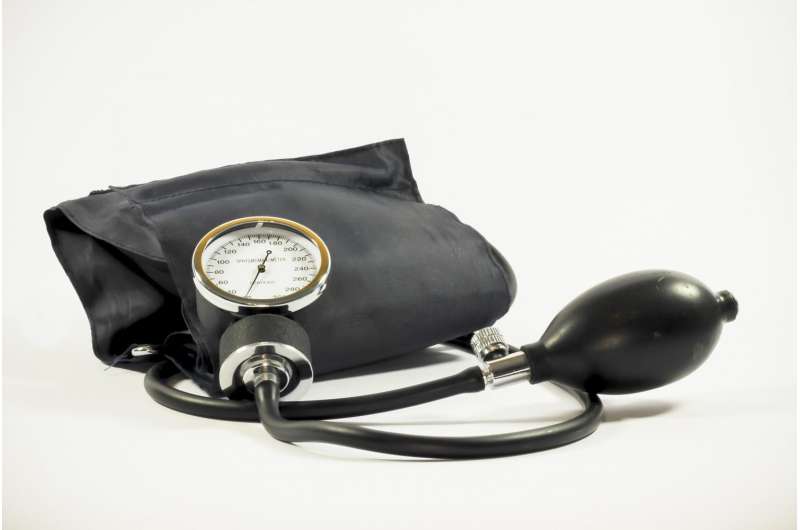Comparing strategies to guide blood pressure treatment

A strategy that examines a patient's overall heart disease and stroke risk to determine blood pressure treatment—rather than blood pressure levels alone—is more effective at preventing events like heart attacks, strokes and death, according to a new study published in PLOS Medicine.
"These results challenge past paradigms in hypertension management and highlight the merits of using predicted cardiovascular risk to guide blood pressure-lowering treatment intensity," said first author Kunal Karmali, '07 MD, MS, '16 GME, a Northwestern Medicine cardiologist and a former fellow in Preventive Medicine.
Donald Lloyd-Jones, MD, ScM, senior associate dean for Clinical and Translational Research and chair of Preventive Medicine, was also a co-author of the paper.
Traditionally, clinical guidelines on the use of blood pressure-lowering drugs have been based primarily on a patient's blood pressure levels. In contrast, guidelines for aspirin and cholesterol management use a multivariable cardiovascular disease (CVD) risk assessment approach. Such an assessment takes into account a range of factors, such as age, sex, total cholesterol, high density lipoprotein cholesterol, systolic blood pressure and smoking status to guide treatment initiation and intensity.
"We can't focus only on the blood pressure number—we have to think about the whole patient and the context of their other risk factors."
Previous research—including a study published in The Lancet co-authored by Karmali and Lloyd-Jones—has also suggested the benefit of using CVD risk assessment in making blood pressure treatment decisions. But until now, no study has directly compared the two strategies using clinical trial data of actual patient outcomes.
In the current study, the international team of investigators analyzed individual data of more than 48,000 participants in 11 clinical trials. They compared the two strategies across the spectrum of risk and blood pressure levels, and demonstrated that a treatment strategy based on predicted five-year CVD risk could prevent more events —including stroke, coronary heart disease, heart failure and CVD death—as well as require the treatment of fewer people, than a strategy based on systolic blood pressure level alone.
Although future prospective studies are needed to confirm the results of the study, the authors note that the findings lend further support to the role of CVD risk assessment in blood pressure treatment decisions for moderate- to high-risk patients, especially those without diabetes or existing cardiovascular disease.
"These data strongly support the paradigm shift in how we think about preventing cardiovascular events with blood pressure lowering. We can't focus only on the blood pressure number—we have to think about the whole patient and the context of their other risk factors," Lloyd-Jones said. "The recent 2017 blood pressure guidelines from the American Heart Association and American College of Cardiology specifically recommend assessing risk quantitatively, and considering that in addition to the blood pressure level."
More information: Kunal N. Karmali et al. Blood pressure-lowering treatment strategies based on cardiovascular risk versus blood pressure: A meta-analysis of individual participant data, PLOS Medicine (2018). DOI: 10.1371/journal.pmed.1002538


















